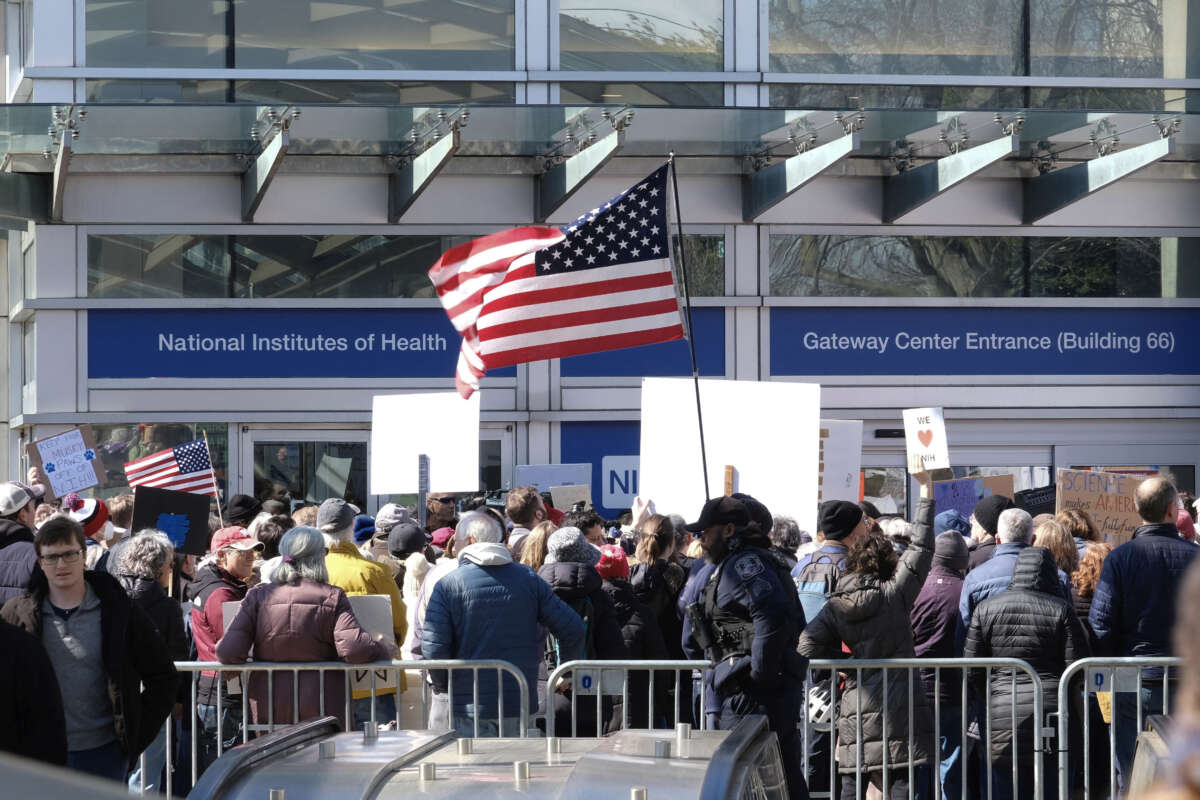Honest, paywall-free news is rare. Please support our boldly independent journalism with a donation of any size.
In 2011, I, Deepti Pradhan, was diagnosed with breast cancer. A year of surgeries, chemotherapy and radiation followed, leaving lasting effects.
In December 2023, I, Christine Ngaruiya, got a call from my parents — my mother, a two-time breast cancer survivor, had something suspicious on a routine mammogram. My heart sank. As a physician, I knew a third breast cancer was unlikely — but I also knew what “something” usually meant.
For both of us, these weren’t just personal battles — they were fights made possible by biomedical research. The government’s investment in science gave us more than time — it gave us precious moments with loved ones. Now, that lifeline is being severed.
We are not just a survivor and a caregiver — we are scientists. National Institutes of Health-funded (NIH) clinical trials shaped the treatments that saved our families. As a patient and a physician, we have directly benefited from medical advances, from chemotherapy to diagnostics. Yet today, that very research is at risk.
Almost 64 percent of deaths in the U.S. in 2023 were a result of noncommunicable diseases, with cancer and cardiovascular diseases being the leading causes. Despite this, the U.S. government is pulling back on research funding. The NIH, the world’s largest public funder of biomedical and public health research, spent over $35 billion in 2023, generating an estimated $92.89 billion in economic activity and supporting over 300,000 researchers across 2,500 institutions.
Yet on February 7, 2025, the NIH announced a policy change capping “indirect costs for grants at 15 percent.” Indirect costs cover a plethora of core functions crucial to conducting the research and in the running of universities, such as paying for utilities to run laboratories, office space, setting up state-of-the-art and high-performance research facilities, supporting administrative staff to run research and other university programs, among others. These average roughly a third of total research funding, and this cap will leave $5 billion unavailable. That is equivalent to 0.6 percent of the U.S.’s defense budget — a drop in the bucket for defense, but a catastrophe for biomedical research. The consequences will be far-reaching: fewer medical breakthroughs, more lives lost and shrinking opportunities for future scientists. Federal Judge Angel Kelley’s March 5, preliminary injunction blocking the indirect costs cap was a positive step, but NIH research funding remains under threat. Some universities have already paused graduate admissions due to funding uncertainties.
Like any investment, research funding has inefficiencies that could be refined. But cutting $5 billion from NIH while adding up to $150 billion to the already massive $850 billion defense budget is a reckless budgetary decision. At his confirmation hearing, Defense Secretary Pete Hegseth vowed to instill a “warrior ethos” in the military. But if we keep slashing biomedical research and public health funding, no one will be safe.
For decades, academic institutions have laid the foundation for groundbreaking research, primarily funded by NIH. Now these same institutions face budget cuts that threaten to halt pivotal research. Were these cuts driven by scientific shortcomings, they might be understandable. But they are entirely political, guided by ideology rather than evidence. NIH-funded research has played a role in the development of 99.4 percent of Food and Drug Administration-approved drugs from 2010 to 2019. Slashing new grants is one thing, but canceling funding for existing research is fiscal irresponsibility. Even if policy makers ignore the careers this will destroy, they should at least consider the millions already invested in near-complete projects.
Shrinking biomedical research funding weakens public health, strains the economy and threatens national security. A report from the Watson Institute for International & Public Affairs at Brown University highlights how prioritizing military spending has weakened other critical sectors of the U.S. economy. Investments in health care, education, infrastructure and emergency preparedness have all suffered as military interests take precedence. The Trump administration’s decision to limit funding for biomedical research doesn’t just affect cancer and cardiovascular disease research — it also undercuts epidemic preparedness, public health surveillance and basic scientific discovery. Cuts to the Centers for Disease Control and Prevention’s Epidemic Intelligence Service, which trains public health laboratory leaders; and Laboratory Leadership Service, which prepares disease detectives to respond to public health threats in the U.S., further weaken our frontline defenses — just as bird flu cases are rising and diseases are spreading across borders at unprecedented rates.
Recent history proves that investment in science saves lives. The COVID-19 pandemic underscored the power of research — from vaccine development to public health response. Yet misinformation and distrust in science prolonged the crisis. Now, we risk repeating history by cutting the very research needed to prevent the next global health emergency.
This isn’t just policy — it’s personal. It’s about lives saved, moments cherished, and futures that hang in the balance. Advocating for public health funding, strengthening policies, combating misinformation, and pushing elected officials to prioritize science-driven policies is no longer optional. Staying informed and engaged is exhausting, but the alternative is worse. Call your congressional representatives. Demand better. Because science and everyday life cannot and should not be separated. If we don’t speak out, who will?
Press freedom is under attack
As Trump cracks down on political speech, independent media is increasingly necessary.
Truthout produces reporting you won’t see in the mainstream: journalism from the frontlines of global conflict, interviews with grassroots movement leaders, high-quality legal analysis and more.
Our work is possible thanks to reader support. Help Truthout catalyze change and social justice — make a tax-deductible monthly or one-time donation today.
